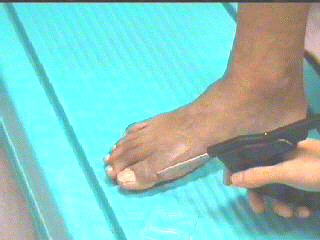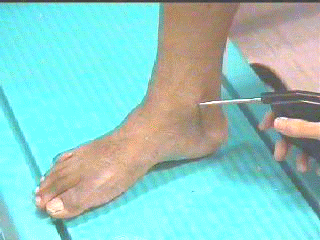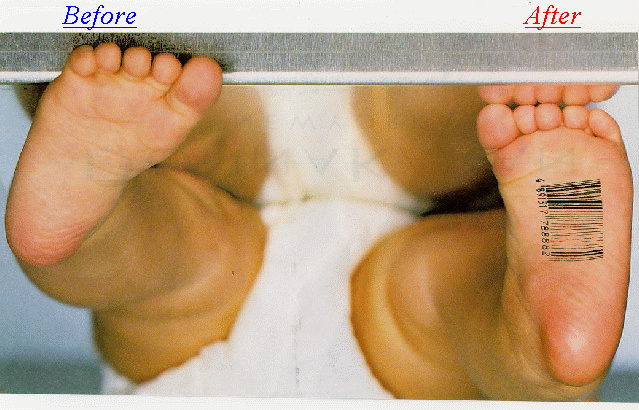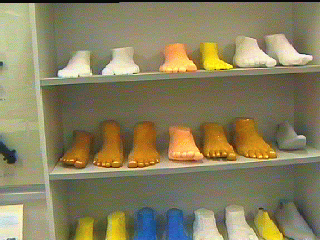Past Research Projects of Ravindra Goonetilleke
1. A Theory for Comfort and its Application in Product Design
Even though consumer products have been researched over a long period of time, research relating
interface pressure and long term comfort is rather patchy. Spinal disc pressures and
electromyography have been extensively used to determine discomfort. Researchers have also
been limited by the lack of a viable operational definition of comfort, and designers have
difficulty to design products right the first time for improved user comfort. Due to the many
parameters encompassing the perception of comfort, the psychophysics of comfort has not really been
a well explored concept and, is often defined as the absence of discomfort. Interface pressure
related studies have suggested that contoured surfaces effectively increase areas, reducing
interface pressures and thereby improving comfort. However, sensory theories tend to
contradict this hypothesis. The primary intention of this study is the development of a theory for comfort and its application to consumer product design
2. Cultural Human-Computer Interfaces for the Chinese population
with Heloisa H.M. Shih
There is a well-known set of principles and guidelines to direct the design of user interfaces.
However, the development of these guidelines was based almost solely on the experience and
environment of the Western culture, mainly the United States and Europe. Although many
aspects of computer interfaces may be considered universal, or culture-independent, others may
be culture-department. For example, use of colour, use of context, sequencing pictures, etc., may
have significant implications on graphical interfaces for the Chinese population. In this research,
we challenge the existing User Interface Design guidelines systematically and scientifically with
regard to their applicability to the Chinese population. We also identify popular metaphors of
the Chinese culture, that could make the interfaces easier to learn and less error-prone. The
expected outcome of this research is a set of guidelines for the Chinese language-based user
interfaces, making possible a much needed addition to existing User Interface Design principles.


 Applied Science Lab eye-tracking system for human-computer interfaces studies and design
Applied Science Lab eye-tracking system for human-computer interfaces studies and design
3. Supervisory Training in Complex Control Tasks
With the advent of automation and advances in technology, the activities of the operator have
shifted from those of an in-the-loop controller to those of an out-of-the-loop supervisor or
monitor. Hence the concept of supervisory control poses a very important question with regard
to training. If the operator is to be primarily a monitor rather than a controller, shouldn't the
training also be done out-of-the-loop? Previous investigations have shown that out-of-the-loop
training produces better optimization capabilities, but poor learning of system dynamics makes
control difficult in emergency situations. The aim here is to create a supervisory training scheme
that will give optimal performance during normal and emergency situations.
4. Development of a Universal Foot Sizing System
with Kwok-Leung Tsui
Traditionally, foot sizing is done by using a Brannock device for the measurement of length and
width. However, from a mathematical viewpoint it is almost impossible to generate a foot form
of 3-dimensions using a set of 2-dimensional measures of foot length and width. In addition,
footwear manufacturers use at least four different shoe scales primarily for the U.S., U.K.,
European and the fourth being a metric measurement. On the flip side, these same
manufacturers depend on up to thirty different measures to build a shoe last. Hence the
mapping is clearly inadequate: two measures from the Brannock device to map 30 measures on
the shoe last. So the question is very fundamental: Is length and width the basis for all other
measurements or is there a better measurement(s) to represent the human foot? The problem at
hand can be classically illustrated using the concept of basis vectors. In the past, the length and
width were chosen to represent the human foot since they were easy to measure and were also
perpendicular to each other. The orthogonal vectors were assumed independent and were used
to represent the basis vector. This is the rationale for the research. The objective of the research is
to elicit in mathematical terms, the basis vector or sizing system that best represents the human
foot so that all 3-D measurements can be derived from the basis vector.


 Foot Digitization using Science Accessories Corporation 3-D Sonic Digitizer
Foot Digitization using Science Accessories Corporation 3-D Sonic Digitizer

5. Dynamic Footwear Fit: Is It The Same As Static Fit?
Footwear fit is generally one of trial and error. Each individual may use a different size of shoe
for a different application. The primary reason can be attributed to differences between static fit
and dynamic fit. To investigate this mismatch, we propose to develop a running/walking
simulator that will allow precise measurement of foot dimensions in dynamic conditions or as
the foot moves during any activity. The apparatus will comprise of a piston under the heel with
the forefoot fixed. An electric motor will drive the piston under the heel and will emulate the
natural frequency of running or walking based on speeds of 5 min/km or 12.5 min/km. Stride
distances and plantar flexion would be obtained from a treadmill measurement to simulate the
foot impact frequency and piston stroke. Instrumentation on and around the foot will allow
precise measurements of the foot during movement. The objective of the project will be to
quantify the differences between static and dynamic foot conditions using statistical analyses.
6. Sports Ergonomics
Cricket is one sport where there is very little scientific research. We have designed and developed an innovative way to check the legality of bowling in cricket. On-going research is related to batting and bowling in cricket.


7. Comfort-Pressure Investigations
Comfort is a high selling point in today's commercial market. However, comfort-pressure studies have not been successful to generate new theories to improve product design. Using commercially available sensors and MEMS technology, we are currently investigating the relationship between comfort and pressure with special relevance to seats and footwear.
 Foot-shoe interface pressure using the FSCAN pressure measurement system
Foot-shoe interface pressure using the FSCAN pressure measurement system

Questions, comments or criticisms are welcome. Please email to:
ravindra@ust.hk
Your are visitor number  since August 30, 2001. Have a good day!
since August 30, 2001. Have a good day!

COPYRIGHT Ravindra Goonetilleke

last updated October 30 2010














since August 30, 2001. Have a good day!

